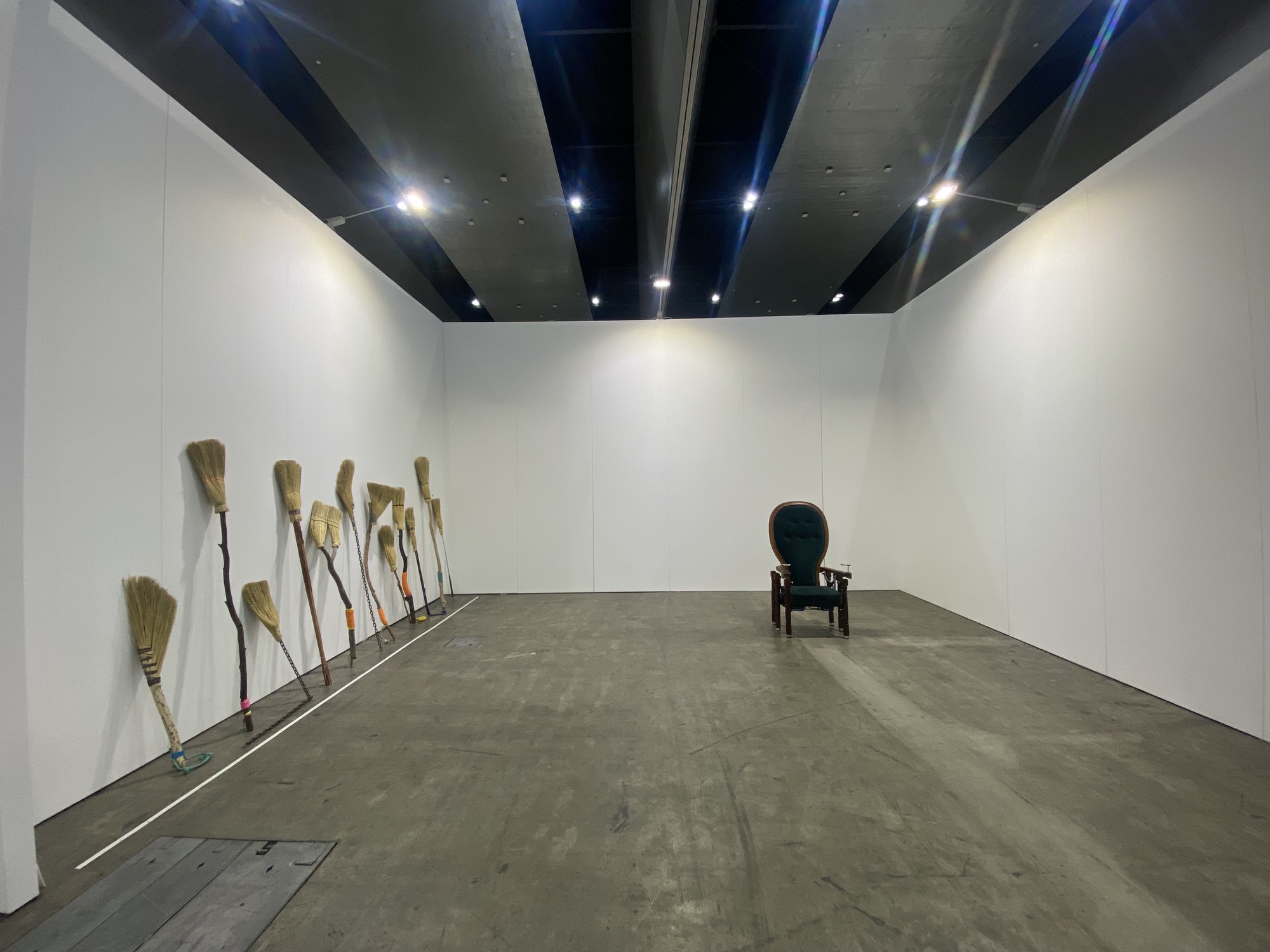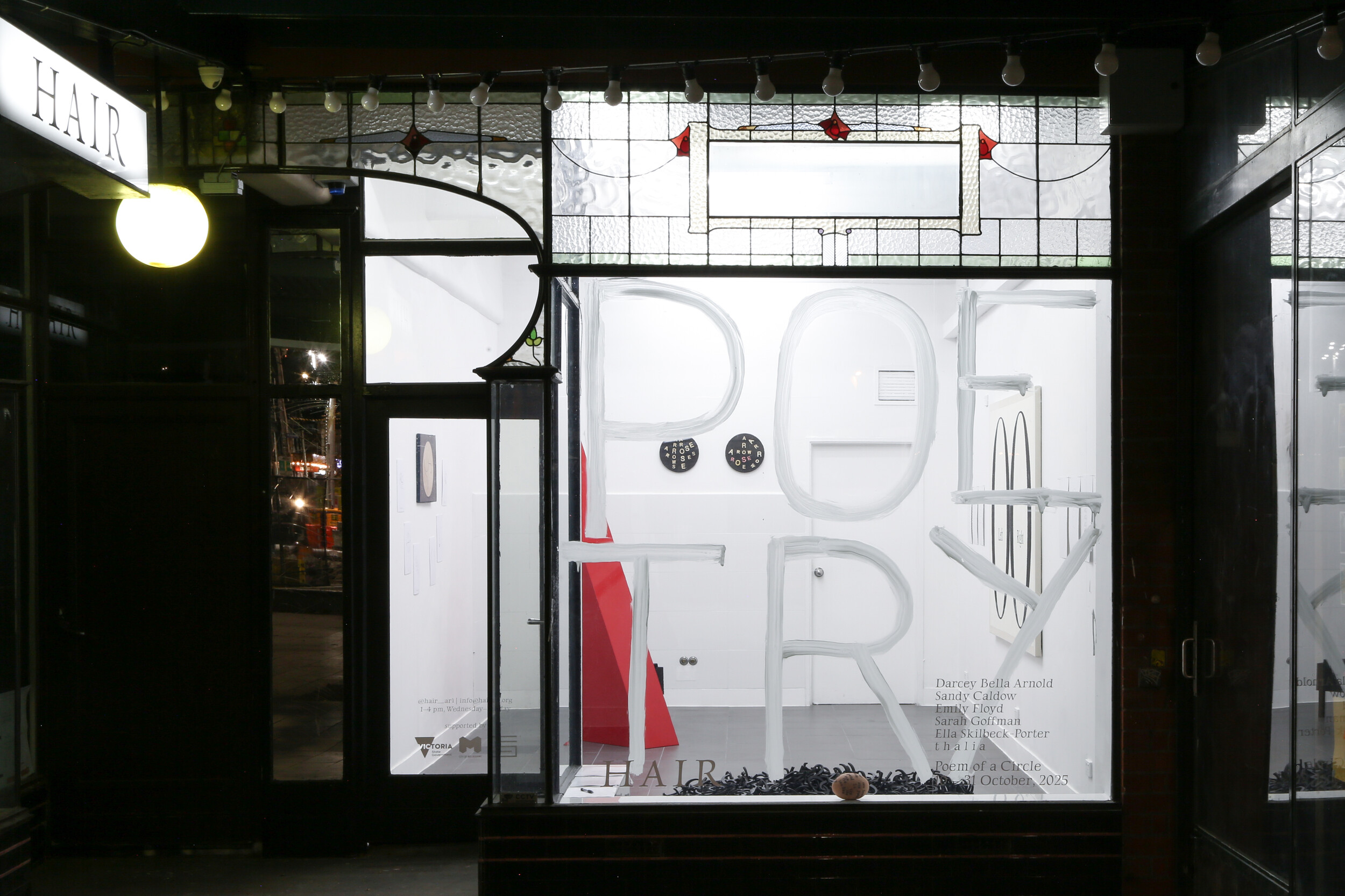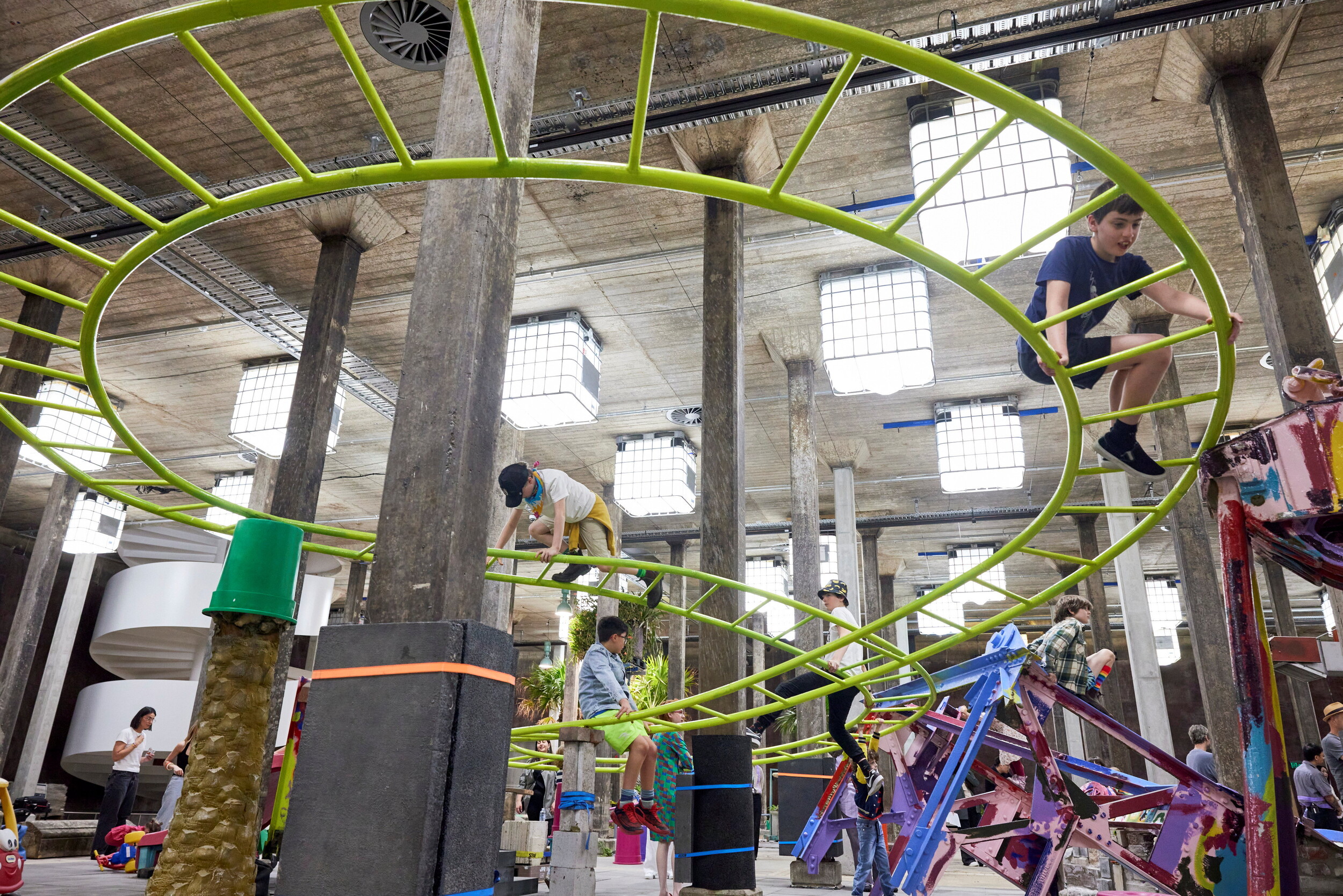Melbourne Art Fair
Giles Fielke
The thing about an art fair is that it makes an economic microcosm out of a surrounding arts ecology. In the case of MAF, the macro environment is about sixty Australian commercial art galleries and their satellites, both public and private: ACMI, bookstores and art presses, beverage companies like Glenfiddich(?), Nepenthe Winery, Melbourne’s List G barristers. However, the principal partner for the MAF, bennelong, is a Melbourne-based funds manager inexplicably named—I’m guessing—for the eighteenth-century interlocutor between the British Crown and people of the Eora Nation during the British colonisation of New South Wales. Charming.
Then, at the ticketed and VIP vernissage event on the evening of 16 February, there are the people. All located within Jeff’s Shed, the Melbourne Convention and Exhibition Centre, makes this a heady kind of city signature cocktail for the contemporary fine arts. If a Manhattan is made from whiskey, sweet vermouth and bitters, a Melbourne might be natural wine, Glenfiddich and craft beer, all served in a wine cooler purchased yesterday at Myer. I repeatedly see the same man dressed impeccably in a tux and drinking one while picking at a cheese platter at the tables set up adjacent to the expo-centre’s lavatories. Shaken, not stirred. Clearly.
I’m not sure what happened to the Fair over the past few years (nor do I really care). The rival Spring1883 ran during the pandemic last year, but MAF hasn’t operated since 2018. There is certainly a sense of optimism and enthusiasm as Victoria’s Covid-19-related health orders are further eased this weekend, but I can’t overlook the word “interregnum” that appears throughout Emily Floyd’s Surplus Labour Owls at Anna Schwartz Gallery booth at the top of the list (A1).
At the centre of the fair is Fine Arts, Sydney (H4). Showing there are only three works and three chairs that look accidentally like a Franz West installation. I listen on as the gallerist explains to a tour of VIPs. Simon Denny’s work features his acquisition of Margaret Thatcher’s collection of Burberry headscarves at an estate sale. One scarf features here, having been UV-printed onto a cheap plastic table-cloth and affixed to the wall of the booth using the static charge from a British Army surplus rug, which now lies on the floor. Something clicks in NGV director Tony Ellwood’s mind when he hears the word “geo-politics” spoken nervously while the gallerist momentarily tugs at an N95 mask. There is a floor sculpture by Hany Armanious, and a wonderfully minimalist painting by Auckland artist Gretchen Albrecht, Seraf (1982), is one of the more dutiful works on offer there and in the entire fair.

There is a sold-out show, consisting of a suite of works by Wanapati Yunupinju, at the Yirrkala community art centre, Buku-Larrŋgay Mulka (A5). It is by far the busiest booth, even though squashed in a corner. The intricately engraved road signs point to the intersection of Indigenous aesthetic and colonial administrative concerns almost too perfectly. If these works now symbolise this year’s fair, on the other side is Michael Bugelli Gallery (D6) from nipaluna/Hobart, which features only a gothic mechanical chair by Michael Candy and a set of weird nimbus-2000-like brooms by Loren Kronemyer resting along one wall. An artist living and working in remote lutruwita (Tasmania), the works by Kronemyer makes the booth feel sparse and remote too, and more conceptually appealing than the decorative art that (over)populates the Fair almost by default.
Kronemyer’s work, I am told, “spans objects, interactive and live performance, experimental media art and large-scale world-building projects aimed at exploring ecological futures and survival skills”. I have not encountered the artist before, but I am immediately interested to hear how they grew the millet that makes up the beginnings of a broom’s brush. I think, for the first time, of Jean-François Millet’s paintings of nineteenth-century peasants and gleaners in the rural settings of post-revolutionary France. That his name makes his realism even more revealing struck me while looking at the broom handles: sticks, chains, golf clubs, and the variety of lashings used in Kronemyer’s assemblies. I’m not looking to buy anything, but I’m glad for this encounter. On the other hand, the neo-pagan aesthetics could be props for a 100 gecs video-clip and would probably sell well as NFTs. Unlike Matthew Harris’ flaming gifs of a cartoon hell, if my prediction is correct (Futures, K1). “We’re already in hell”, I hear absolutely everyone who is at the fair whisper indiscreetly to anyone else who’ll listen. Not about Harris’ work, but about the MAF itself. Why make things so abstract?
Giles Fielke is a writer and researcher of film and media art histories.


